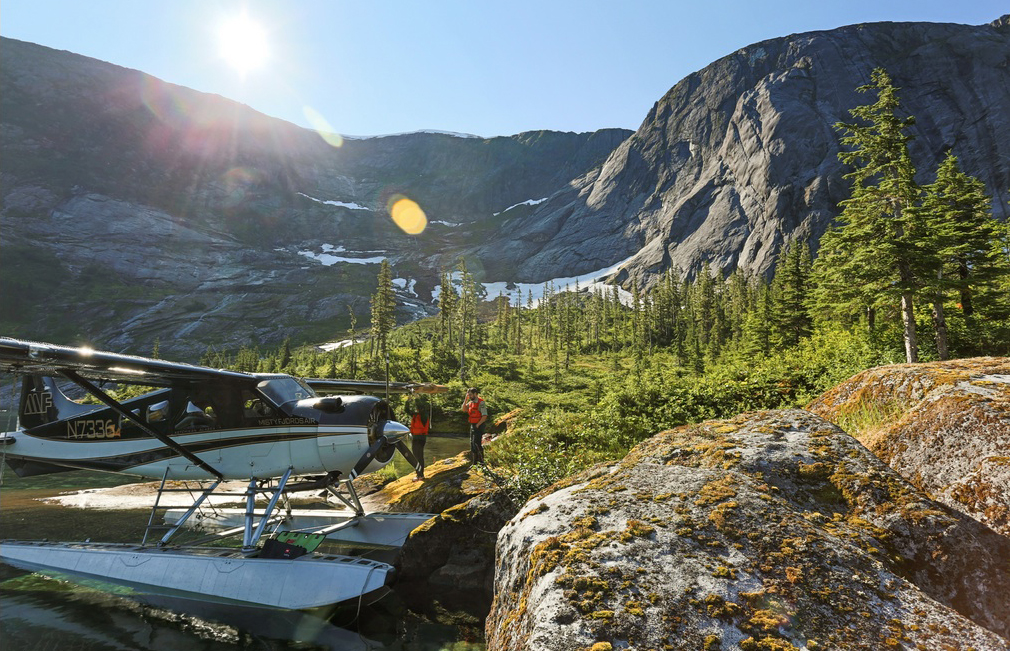We at Switchback Travel are always on the lookout for films and books that celebrate the value of wilderness. The Meaning of Wild, a new short film by cameraman Ben Hamilton, honors the fiftieth anniversary of the Wilderness Act with a journey through Alaska’s vast Tongass National Forest. Traveling by boat, plane, kayak, and foot, Ben set out to capture this extraordinarily beautiful corner of the world and inspire the next generation of advocates. You can rent or buy the film on Vimeo, or order the DVD or Blu-ray from the film’s website. Also, we had a chance to ask Ben a few questions about the experience (below).
What is your background and how did you hatch the idea for this project?
I started making films in high school (everything from weddings to a fantasy/adventure short) and went on to study film and geography at The University of Texas. In college, I spent three of my four summers working in Alaska to produce a documentary about the fight to save the first citizen-proposed Wilderness in Alaska (Echoes of the Tongass). Those trips introduced me to Wilderness and the Tongass National Forest.
After graduation, I moved to Alaska to work for the Sitka Conservation Society as their media coordinator and had the privilege to spend three months or so in Wilderness areas across the Tongass. During that summer, Adam Andis, the Wilderness Stewardship Coordinator, and I thought up the idea for the film. We wanted to share these amazing places and also figure out a way to make a film that would relate to our generation. I eventually moved to Washington D.C. and starting working full-time as a freelancer for television and Adam continued his work at SCS. Each summer after I found myself in Sitka for one reason or another, and we continued to pitch the film. Finally, after nearly two years, the Forest Service in the Tonagss agreed to support the project. We got to work right away to bring The Meaning of Wild to life.
Why the Tongass? Did big wilderness ever get the best of you during filming?
The Tongass is not only the largest national forest in the country, but also has more Wilderness areas than any other National Forest. SCS has built a great working partnership with the Forest Service there, and through their extensive network in the region we had the contacts to pull off a project that would take a serious amount of logistical coordination. Underlying all of the practical stuff is the fact that it truly is an amazing place and one of the crown jewels of our country.

When we were filming in the Kootznoowoo Wilderness on Admiralty Island, we were surrounded by brown bears. The island has the highest density of bears on earth and they are concentrated in the estuaries during salmon season. I have filmed bears a few times in my career, but that island is a different story. We had been filming there for two or three days when we decided to take a hike into the forest to an area where you could look down on bears fishing. The second camera operator, Justin DeShields, and I were walking casually down a small trail, both talking about how well bears smell and how unlikely it would be to really "surprise" a bear. Not thirty seconds later did we turn the corner to see a boar (a big male brown bear) sitting down in the middle of the path, probably 20 feet away. It looked at us, we did the standard, "hey Bear, get out of here,” and the bear slowly walked into the high brush. Both of us waited, yelled a bit more, and after a few minutes decided to continue. When we got to where the bear had been, we heard a crack and looked into the brush to see that the bear had walked about three feet off the trail and was just sitting right there eating and looking at us. We backed away slowly, but that got our heart going pretty fast and is without question the closest I have ever been to touching a bear. Looking back, I wish the camera had been rolling, but I am just happy we didn't get charged. It was a humbling experience and like the Wilderness Act says, man is truly a visitor (and you feel it when you are in the world of brown bears!).
What are a couple of the most important takeaways?
Setting out, we knew we wanted to make a film that was more than just pretty pictures. It was crucial to speak with the folks who knew these areas best and who had spent their life articulating their passion for these places. I think one of the biggest takeaways I had from the experience is that Wilderness is not the same as "nature." It's a unique idea that really has to do more with restraint than getting back to a landscape of the past. Wilderness ranger Solan Jensen really hit this home for me, and helped me understand that the Wilderness Act is about us saying let’s just take our hands out of it, let it do what it does, and value that. Some of these areas had mines a hundred years ago, others had villages, some have never been touched, but the important thing is that we as a country have said that we want to have places where the will of the land dominates. The film touches on many of the core values of Wilderness, but that is one that for me really hit home. It's nice to know that there is a type of land designation that is based on letting the wild be wild, with no roads, little to no trails, and just nature.
For showings and more information, visit www.meaningofwild.com.
